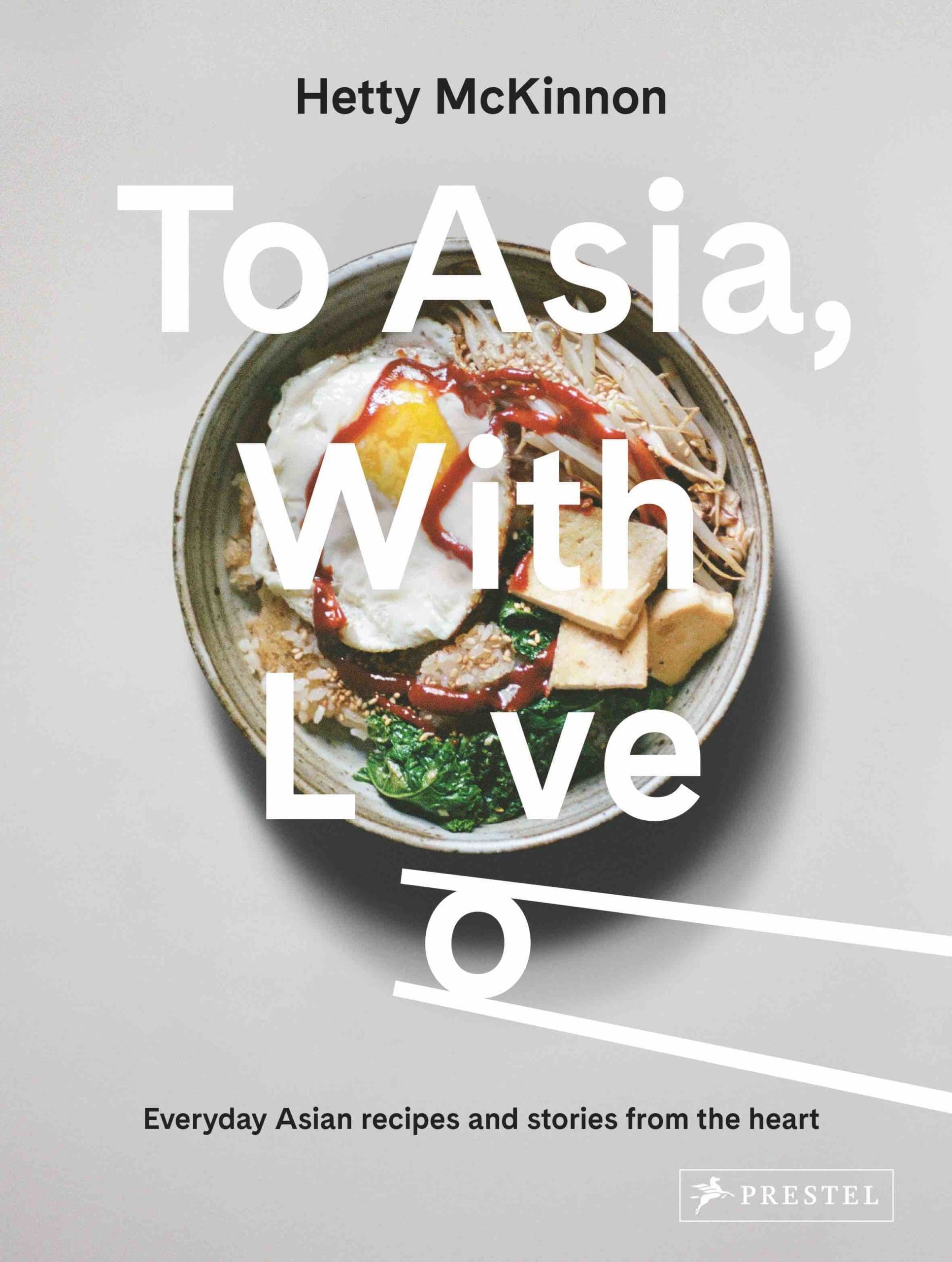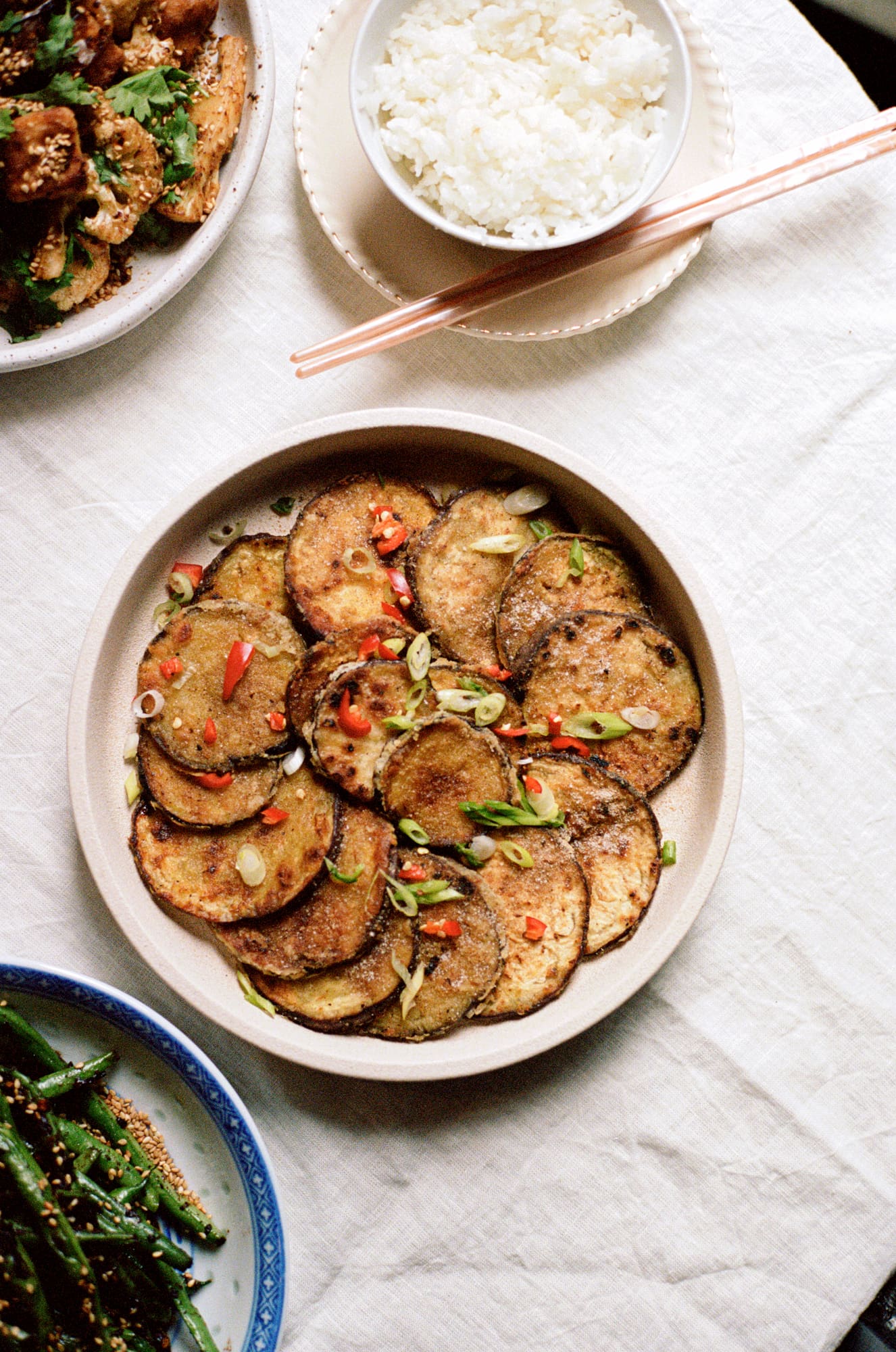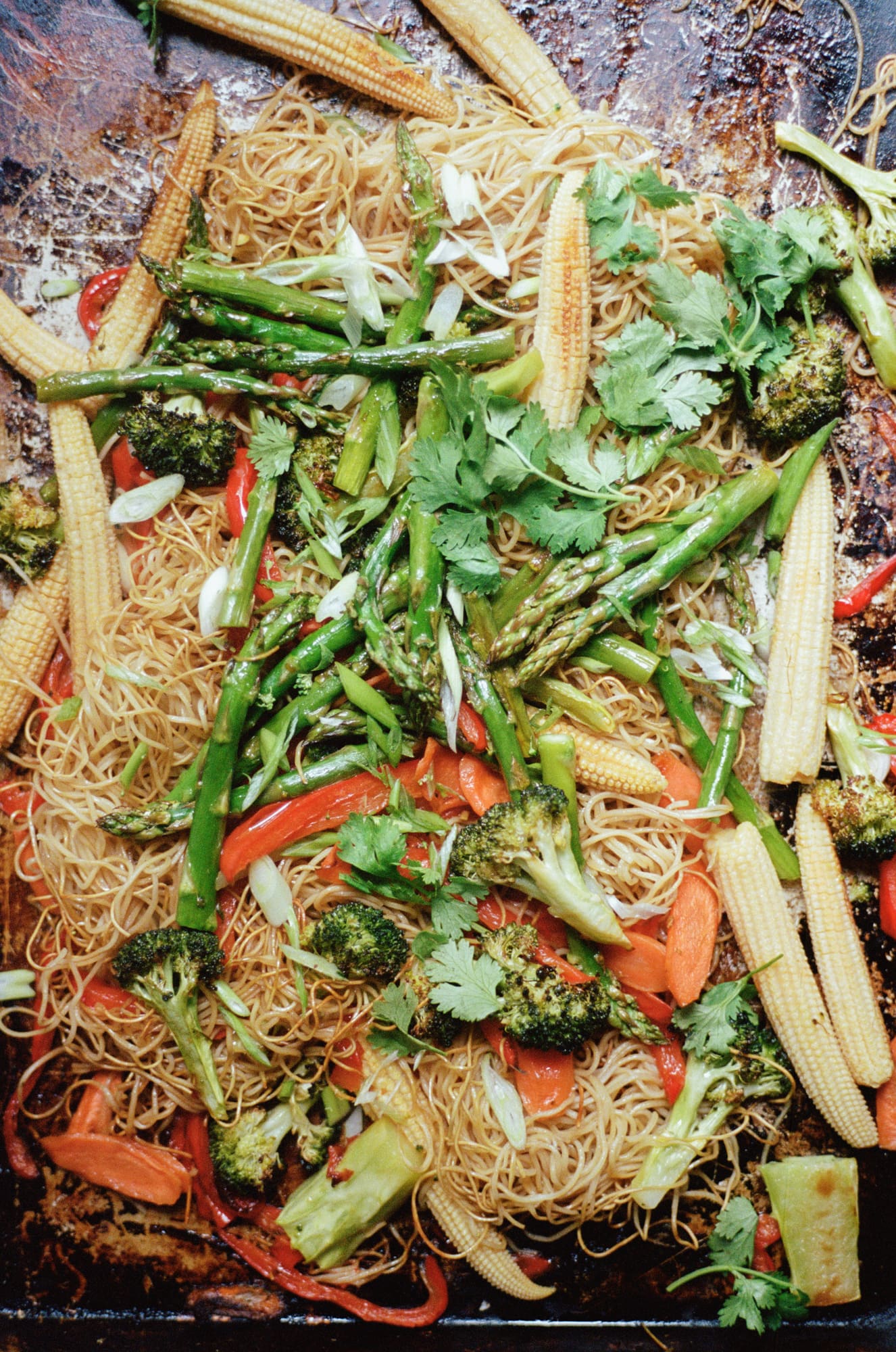Hetty McKinnon is a culinary powerhouse. The cookbook author and entrepreneur, now based in Brooklyn, got her start in the world of food with a salad delivery business in Sydney, Australia, where she grew up. She spent much of her childhood feeling like she was caught between two cultures — Chinese and Australian — and as an adult, third culture cooking helped her connect with her identity. Her latest cookbook, To Asia, With Love, democratizes Asian food and helps home cooks everywhere understand just how easy and delectable everyday Asian recipes are. Here, she chats with us about her new tome, her journey to embrace her identity and more.
How has food helped you connect with your cultural identity?
Growing up, food was definitely the main way I connected with my cultural roots. My parents, who immigrated to Sydney from Guangdong province in southern China, were very traditional. At home, we spoke Cantonese and practiced Chinese customs.
My mom had an altar, and every morning she would light incense and pray to pay respects to her ancestors. Some mornings, she would ask me to light her incense and pray on her behalf. While I was very comfortable doing it, I didn’t really understand the significance of it at the time. I didn’t understand much about my Chinese roots as my parents didn’t really talk about their lives before they arrived in Australia. But food was always my gateway to my Chinese heritage; it was a tangible way for me to understand who my parents are and where they came from.
We only really ate Chinese food at home. We started every day with a big savory Asian breakfast — noodles, macaroni soup, fried rice, jook — and my mother always seemed to be cooking. I saw how much cooking meant to her, but I didn’t really understand just how important it was to her until I was much older.
As a child, I thought her obsession with food was just because she liked to feed us. As an adult, I now understand that cooking was her way to stay connected to her homeland and to her cultural roots — a way to keep her family traditions alive. It was also the way she expressed love for her children, as verbal expressions of love are very rare amongst Asian parents of a certain generation.
Even from the youngest age, whether I was watching my mom cook, helping her fold dumplings or having dim sum every Sunday in Sydney’s Chinatown, food gave me moments to really recognize my Asian-ness. But I really didn’t think deeply about my cultural identity until I started to cook myself. Cooking allowed me to really think about the role that food plays in connection — between people, between generations, between cultures — and helped me make sense of not only my Chinese identity but also my Australian one.
Why was it important to you to publish a cookbook celebrating Asian(ish) recipes?
For me, this book was a personal calling. I see To Asia, With Love as my homecoming: a return to the foods and flavors that I grew up eating and a celebration of the Asian food culture in Australia and around the world. The book is also deeply personal, exploring my cultural confusion growing up, the feeling of being caught between two cultures, my rejection of my Asian-ness as a teenager, and how cooking has allowed me to reconnect with my cultural heritage. It’s a journey that many first and second generation children can relate to, and I wanted to give a voice to others out there who have shared this struggle over identity.
I also wanted to celebrate the breadth of the Asian food that has inspired me throughout my life. Due to geography and immigration, Australian food is very biased toward Asian flavors. Although I grew up with traditional Chinese food at home, my style of cooking is also very influenced by the modern Asian flavors of Australia, and this book really brings together all of these influences.
As much as this book is a celebration of my Chinese-Australian upbringing, it is also a love letter to my Asian heritage. Growing up, I don’t feel like I was very connected to my Asian heritage. I don’t remember feeling proud of being Chinese-Australian; in fact, I just wanted to be Australian. I wanted to blend in, to be like everyone else. I didn’t embrace how special and rich my cultural heritage was. That all changed after I had children and started to cook. Food led me back to my cultural heritage and instilled in me a great sense of pride in being who I am. To Asia, With Love is a celebration of this homecoming; there’s a huge chunk of my heart in this book.
Can you expand on the idea of third culture cooking?
“Third culture” is a term coined by U.S. sociologist Ruth Hill Useem in the 1950s to describe children who grow up in a place that is not their parents’ homeland. Home is often everywhere and nowhere at once. For me, I didn’t see myself as living in the third culture until I started cooking professionally.
When I launched my salad delivery business in Sydney 10 years ago, I cooked many cuisines: Mediterranean, Middle Eastern, flavors of the Pacific and of course Asian — all flavors that had come to symbolize modern Australian cuisine. I grew warrigal greens, a native Australian plant, in my community garden and turned it into pesto for pasta salad (a recipe featured in my first book, Community). I also experimented with Asian ingredients, mostly encouraged by my mother, who often cooked alongside me. She brought me seaweed to try, suggested wood ear fungus for its crunchy texture (and multitude of health benefits) and coached me on the brands of mung bean vermicelli that would retain their fresh texture in salads.
Under her watchful eye, I started combining disparate flavors and ingredients: hoisin sauce with tahini, ginger scallion sauce with soba noodles, Brussels sprouts with lotus root. For me, these combinations felt freeing, a license to cook the foods that felt natural to me and my experience as a Chinese girl growing up in Australia. In many ways, food allowed me to “come home” and finally understand my cultural identity.
What myths about Asian cuisine do you hope to dispel?
There is a perception that Asian flavors — and Asian food in general — are hard to achieve at home. I’ve always wondered why most home cooks are very confident making a bowl of pasta but felt so intimidated by noodles, since the products are actually very similar. So in To Asia, With Love, I really wanted to give home cooks of all skill levels a gateway to Asian flavors, with an emphasis on accessible everyday pantry ingredients. I wanted to show how these dishes and flavors could be created with many staples they already have in their pantry.
I think accessibility is a big issue in home cooking. Many people are intimidated about having to go to a specialty grocery store, which I can understand, so I set out to deliver recipes that take away any hesitation around “I don’t know what that ingredient is.” I offer substitutions that make sense, like using tahini in place of harder-to-fine Chinese sesame paste, and am very flexible with ingredients.
A huge myth I wanted to dispel is that Asian food is meaty. While this is true of the food you might find in restaurants, Asian home cooking is much more balanced. When I became a vegetarian in my late teens, my mom “vegetarianized” many of the traditional recipes we grew up eating, and these meals did not lack flavor or texture. So I saw firsthand how well Asian food can be adapted to a meat-free diet.
To Asia, With Love is a chance to show the world how fresh and vegetable-friendly Asian food can be, without compromising on taste. Many people cook from To Asia, With Love not realizing it’s vegetarian (and largely vegan and gluten-free), which is exactly what I wanted to achieve with the recipes.
You took all the photography for this cookbook yourself. What was that experience like?
It was something I felt very strongly about. I wanted the photos to be real, un-styled, simply capturing a moment in time. There are no props — just the dishes from my personal collection. And the only hands are those of my kids, who are in the real-time act of eating! I think that’s what makes the photos in this book really special: the fact that they are so real, almost like anyone could have taken them.
They are also all taken on film, which lends a beautiful timelessness to the book. The images look like photos from a family album. They are evocative and nostalgic. I think there is a really beautiful quality of film that invites the viewer into the frame and makes them part of the story.
The actual experience of shooting a book myself was really fulfilling. I was on my own the entire time, and it was definitely the most solitary I have felt while shooting a book. But I think this lends to the overall serenity of the book. There is a quiet calm in the photos that feels very special.
After the deadly attacks on Asian Americans earlier this year, you posted on Instagram that “Asian hands tell a thousand stories.” Can you talk more about that?
Over the past 12 months and especially in the aftermath of the horrific shootings in Atlanta, the Asian community has had to really reckon with the vulnerability of our own skin. While I’ve thought about my physical appearance over the years and have experienced racism, both casual and systemic, all my life, it was the first time I had to consider how my physicality — my face, the color of my skin, the shape of my eyes — put me under threat. That is confronting.
At the same time, I thought a lot about my own identity and the way I see myself. And when I did, I was overcome by an overwhelming sense of pride in who I am and an indebtedness to my parents, to my ancestors and all that growing up Asian has given me. I remembered my mother’s hands, wrinkled and worn from cooking, washing, planting and harvesting food, hands that have endured famine, hands that toiled for her family. Hands that never give up. Asian hands hold our histories and have fought off adversity in order to give a better life to future generations. They are strong and resilient. So in the face of Asian hate, that is what I choose to celebrate: that strength, resilience and absolute fortitude to move forward, even in the face of adversity.
How does To Asia, With Love honor your heritage and your family story?
For immigrants, cooking is a tether to their homeland. When my mother immigrated to Australia, cooking the foods of her elders was her way to stay connected to her family, to her heritage, to her roots. She paid this forward to her children, the next generation. And so I honor this every day in cooking for my own family, in sharing the flavors of my mother’s vibrant Cantonese cooking with my children, so that this story can keep being told.
It’s important to remember that traditions and recipes are not static; they evolve over time and place. My stories in To Asia, With Love are personal to me and my experience growing up in an immigrant household in Australia. In my personal story, however, others find deep resonance. People can see their own experiences and memories in my stories and in my recipes. And that is the unique thing about writing a cookbook with a strong narrative: The food and recipes are there to tell a more complex story that’s not exclusively Asian or Australian or American — but human. By honoring my heritage and my family story in To Asia, With Love, I hope this will allow readers and home cooks to find their own connection with their family, their friends and their communities.
What do you hope home cooks ultimately take away from your cookbook?
I hope To Asia, With Love will give home cooks the confidence to cook Asian cuisine any night of the week. I really wanted to democratize Asian food in this book, to show home cooks how this type of cuisine is as achievable as, say, a bowl of pasta or soup. This is very much weeknight food because it’s quick and doesn’t require any planning or fancy ingredients. It’s everyday food for the soul.







